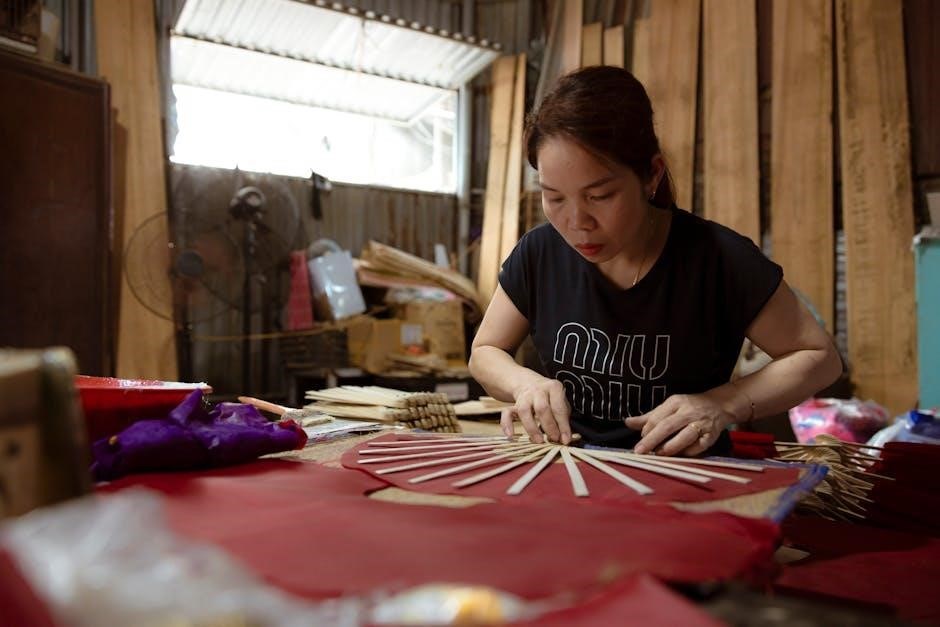Properly installing child car seat straps is essential for ensuring a child’s safety and comfort during travel. This guide provides clear steps to secure your child correctly, emphasizing safety and comfort through accurate strap adjustment and installation techniques.
Importance of Properly Installing Child Car Seat Straps
Properly installing child car seat straps is crucial for ensuring a child’s safety and comfort during travel. Correct installation prevents the seat from shifting, reducing the risk of injury in sudden stops or accidents. It ensures the straps hold the child securely, distributing forces evenly to protect vulnerable areas. Improper installation can lead to inadequate protection, increasing the risk of harm. Following the manufacturer’s guidelines guarantees the seat functions as intended, providing optimal safety and peace of mind for parents. Regular checks and adjustments are essential to maintain safety standards as the child grows.

Preparation for Installing the Straps
- Read the car seat manual thoroughly to understand specific instructions.
- Gather all necessary tools and ensure the seat is on a flat surface.
- Check the straps for any damage or wear before installation.
- Position the child correctly in the seat before adjusting straps.
Gathering Necessary Tools and Manuals
To ensure a smooth installation process, gather all required tools and manuals beforehand. This includes the car seat manual, a screwdriver, and a vehicle seatbelt or ISOFIX anchors. The manual provides specific instructions for your seat model, ensuring safety and correctness. Familiarize yourself with the content to understand unique features and requirements. Additionally, check for any compatibility issues with your vehicle. Having all tools ready saves time and reduces the risk of errors during installation. Proper preparation is the foundation for a secure and correct setup, guaranteeing your child’s safety on the road.
Positioning the Child Car Seat Correctly
Correct positioning of the child car seat is crucial for safety and proper function. Place the seat on a flat, stable surface, ensuring it aligns with the vehicle’s seat. For rear-facing seats, the base should be level, and the carrying handle should be upright. Forward-facing seats need the base firmly attached and the seatbelt or ISOFIX anchors securely fastened. Check the seat’s angle indicator or adjust the recline to meet manufacturer guidelines. The seat should not move more than one inch side to side or front to back. Ensure the area around the seat is clear of obstructions. Proper positioning ensures optimal safety and comfort for your child during travel.

Step-by-Step Installation Process
Secure the base, attach seat belts or ISOFIX anchors, adjust shoulder straps, tighten the harness, and verify the crotch strap position for a safe and proper installation.
Attaching the Base of the Car Seat
To ensure stability, place the car seat base firmly on the vehicle seat. Use the built-in level indicator to achieve the correct angle. Tighten the base using the vehicle’s seat belt or ISOFIX anchors. For seat belts, thread the belt through the base’s designated slots and secure it tightly. If using ISOFIX, click the connectors into the vehicle’s anchors until they lock. Check the base’s stability by gently rocking it; it should not move more than an inch. A securely attached base is crucial for the car seat’s effectiveness in protecting your child during travel;
Securing the Seat Belt or ISOFIX Anchors
Once the base is positioned, secure it using either the vehicle’s seat belt or ISOFIX anchors. For a seat belt installation, thread the belt through the base’s designated path. Pull the belt tight and ensure it is not twisted. Buckle the seat belt and tighten it firmly until the base is snug against the vehicle seat. If using ISOFIX, align the base’s connectors with the vehicle’s anchors and click them into place until they lock securely. Tighten the ISOFIX straps if necessary. Always refer to your vehicle and car seat manuals for specific instructions. A properly secured base ensures the car seat remains stable and safe during travel.
Adjusting the Shoulder Straps
Adjusting the shoulder straps ensures the harness fits your child snugly and provides optimal protection. Place your child in the car seat with their back flat against the seat. The shoulder straps must pass just above the child’s shoulders, not too high or low. If the straps are adjustable, lower or raise them to match your child’s height. Tighten the straps by pulling the adjustment strap at the bottom of the seat. Check for proper fit by ensuring no slack remains and the straps lie flat. Your child should have limited movement, and the straps should not dig into their shoulders. Regularly check and adjust the shoulder straps as your child grows to maintain a safe and comfortable fit.
Fastening and Tightening the Harness
Once the shoulder straps are correctly positioned, buckle the harness by aligning the chest clip at armpit level. Tighten the straps by pulling the adjustment strap located at the base of the seat. Ensure the harness is snug but not overly restrictive. To check the fit, insert two fingers between the harness and your child’s chest; if they fit comfortably without excess slack, the tightness is correct. Regularly inspect the chest clip to ensure it remains at the proper height as your child grows. A secure and properly tightened harness is crucial for protecting your child in the event of sudden stops or collisions, ensuring their safety and comfort during travel.
Verifying the Correct Position of the Crotch Strap
After securing the harness, check the crotch strap to ensure it is properly positioned. The strap should lie snugly between the child’s legs, neither too tight nor too loose. Adjust the strap so it fits comfortably against the body without causing discomfort. The crotch strap should be tight enough to prevent excessive movement but not so tight that it restricts circulation. Regularly inspect the strap to ensure it remains in the correct position, especially as your child grows. A correctly placed crotch strap is vital for maintaining the effectiveness of the harness and ensuring your child’s safety during travel. Proper positioning prevents slipping and provides optimal protection in the event of sudden stops or collisions.

Common Mistakes to Avoid
Avoid loose or overly tight straps, as both compromise safety. Ensure the chest clip is at armpit level and adjust straps as your child grows for proper fit and protection.
Incorrect Tightness of the Straps
One of the most common mistakes is incorrect strap tightness. Straps that are too loose can cause excessive movement during sudden stops, while overly tight straps may cause discomfort or restrict breathing. To ensure proper fit, always check the straps after securing your child. They should be snug but allow room for two fingers between the strap and your child’s chest. If the straps are too tight, they can cause respiratory distress, especially for younger children. Conversely, loose straps may fail to hold the child securely in the event of a collision. Regularly inspect and adjust the straps to maintain the correct balance between safety and comfort. Proper tightness is crucial for optimal protection and a pleasant travel experience for your child.
Improper Positioning of the Chest Clip
Improper positioning of the chest clip is another common error that can compromise safety. The chest clip should be placed at armpit level, ensuring even distribution of force across the shoulders and chest in case of sudden stops or impacts. If the clip is too low, it may not effectively restrain the child, potentially leading to movement or ejection from the seat. Conversely, positioning it too high can cause discomfort and restrict breathing. Always refer to the manufacturer’s guidelines for correct placement. Regular checks are essential to ensure the chest clip remains properly aligned, as improper positioning can reduce the effectiveness of the harness system and increase the risk of injury during a collision.
Not Adjusting Straps as the Child Grows
Failing to adjust the straps as the child grows is a critical oversight that can undermine safety. As children grow taller and heavier, the harness straps must be repositioned to accommodate their changing size. Straps that are too loose or too tight can lead to discomfort and reduced protection. Parents should regularly check the strap length, ensuring they pass through the correct shoulder slots and lie flat against the child’s body. Additionally, the crotch strap should be snug to prevent excessive movement. Neglecting these adjustments can result in a poorly fitting harness, increasing the risk of injury in the event of sudden braking or an accident. Regular inspections and timely adjustments are vital to maintain optimal safety and comfort for the child.

Maintenance and Care
Regular inspections, cleaning with mild products, and proper storage ensure the longevity and safety of the child car seat straps, maintaining their effectiveness and your child’s comfort.
Regular Inspection of the Straps
Regularly inspecting the straps of a child car seat ensures they remain safe and functional. Check for fraying, cuts, or excessive wear, which can weaken the material. Buckles and adjusters should operate smoothly without sticking. Ensure all stitching is intact and free from loose threads. Signs of UV damage, such as fading or brittleness, should also be assessed. If any damage is found, replace the straps immediately. Schedule inspections before long trips or every six months to maintain reliability. A thorough examination helps prevent potential risks and ensures the straps can securely hold the child in place during travel.

Cleaning the Straps and Harness
Cleaning the straps and harness of a child car seat is crucial for maintaining hygiene and functionality. Remove any removable covers and wash them with mild detergent, following the manufacturer’s instructions. For the straps, use a soft cloth dampened with water and a gentle soap solution. Avoid harsh chemicals or abrasive cleaners that could damage the materials. Allow the straps to air-dry completely before reassembling the seat. Regular cleaning prevents the buildup of dirt and bacteria, ensuring a clean and safe environment for your child. Always refer to the manual for specific cleaning recommendations to avoid voiding the warranty or compromising safety.
Storing the Car Seat When Not in Use

When the car seat is not in use, proper storage is essential to maintain its condition and safety features. Store it in a cool, dry place away from direct sunlight and moisture. Avoid basements or attics prone to humidity, as this can damage materials. Do not leave the seat in a vehicle trunk for extended periods, as heat and moisture can degrade the components. Use a protective cover or storage bag to shield it from dust and pests. Ensure the seat is fully dry before storage to prevent mold or mildew. Always follow the manufacturer’s recommendations for storage to preserve the seat’s integrity and ensure it remains safe for future use.

Proper installation and final checks ensure your child’s safety and comfort. Regular verification of straps and adjustments guarantees optimal protection during travel.
Final Checks for Safety and Comfort
After installing and adjusting the straps, perform a final inspection to ensure everything is secure. Check that the chest clip is at armpit level, the shoulder straps are snug, and the harness is tight. Test the car seat by gently rocking it to ensure it doesn’t move excessively; Additionally, verify that the crotch strap is correctly positioned and not too tight. Finally, ensure your child is comfortable and can move their arms freely. These checks guarantee both safety and comfort, providing peace of mind for a secure journey.
